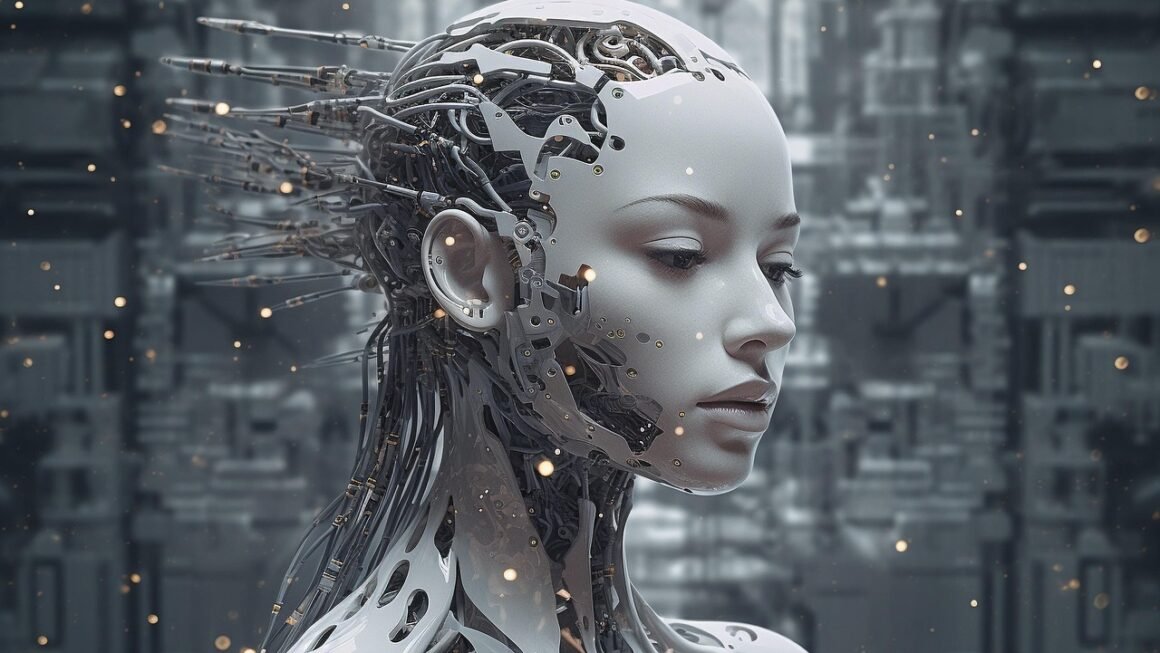Intelligent Automation (IA) is rapidly transforming the business landscape, moving beyond basic Robotic Process Automation (RPA) to encompass a broader range of advanced technologies. By combining the power of RPA with Artificial Intelligence (AI) capabilities such as machine learning, natural language processing (NLP), and optical character recognition (OCR), IA is enabling businesses to automate complex, end-to-end processes, driving efficiency, reducing costs, and improving overall performance. This comprehensive guide will delve into the key aspects of intelligent automation, providing insights into its benefits, applications, implementation strategies, and future trends.
Understanding Intelligent Automation
What is Intelligent Automation?
Intelligent Automation (IA) is the next evolution of Robotic Process Automation (RPA). While RPA automates repetitive, rule-based tasks, IA takes it a step further by incorporating cognitive technologies. These technologies allow systems to learn, adapt, and make decisions like humans, enabling the automation of more complex and variable processes. Think of it as upgrading a factory robot to have problem-solving abilities.
Key Technologies in Intelligent Automation
IA leverages a combination of powerful technologies:
- Robotic Process Automation (RPA): Automates repetitive tasks by mimicking human actions on computer systems.
- Artificial Intelligence (AI): Enables machines to learn, reason, and solve problems.
- Machine Learning (ML): A subset of AI that allows systems to learn from data without explicit programming.
- Natural Language Processing (NLP): Enables computers to understand and process human language.
- Optical Character Recognition (OCR): Converts scanned documents or images into machine-readable text.
- Intelligent Business Process Management Systems (iBPMS): Platforms that orchestrate and manage complex business processes, often incorporating AI and automation capabilities.
The Difference Between RPA and IA
The key difference lies in the type of tasks each can handle:
- RPA: Best suited for structured, rule-based, and repetitive tasks (e.g., data entry, invoice processing).
- IA: Designed for unstructured, complex, and decision-based tasks (e.g., customer service, fraud detection, supply chain optimization).
Benefits of Implementing Intelligent Automation
Increased Efficiency and Productivity
IA automates tasks that previously required significant human effort, resulting in:
- Faster processing times.
- Reduced manual errors.
- Increased output.
- Improved employee productivity by freeing them from mundane tasks.
Example: A bank using IA to automate loan application processing can significantly reduce the time it takes to approve or reject applications, leading to faster turnaround times and improved customer satisfaction.
Cost Reduction
By automating processes, businesses can reduce labor costs and operational expenses:
- Lower staffing requirements.
- Reduced error rates, leading to fewer rework and reconciliation costs.
- Improved resource utilization.
Example: An insurance company automating claims processing with IA can reduce the number of claims adjusters needed and minimize fraudulent claims, resulting in substantial cost savings.
Enhanced Customer Experience
IA can personalize interactions and improve customer service:
- Faster response times.
- Personalized recommendations.
- Improved accuracy and consistency.
- 24/7 availability through chatbots and virtual assistants.
Example: An e-commerce company using IA-powered chatbots to handle customer inquiries can provide instant support, resolve issues quickly, and improve customer satisfaction.
Improved Decision-Making
IA provides valuable insights and supports data-driven decision-making:
- Real-time data analysis.
- Predictive analytics.
- Improved forecasting.
- Better risk management.
Example: A retail company using IA to analyze sales data can identify trends, optimize pricing, and improve inventory management, leading to increased profitability.
Practical Applications of Intelligent Automation
Finance and Accounting
IA can automate various finance and accounting processes:
- Accounts Payable: Automate invoice processing, reconciliation, and payment disbursement.
- Accounts Receivable: Automate invoice generation, payment collection, and reconciliation.
- Financial Reporting: Automate data extraction, analysis, and report generation.
- Audit Compliance: Automate compliance checks and data validation.
Human Resources
IA streamlines HR processes and improves employee experience:
- Recruitment: Automate resume screening, interview scheduling, and onboarding.
- Payroll: Automate payroll processing, tax calculations, and compliance reporting.
- Employee Onboarding: Automate paperwork, system access, and training enrollment.
- Performance Management: Automate performance review scheduling and data analysis.
Supply Chain Management
IA optimizes supply chain operations and improves efficiency:
- Demand Forecasting: Automate demand prediction based on historical data and market trends.
- Inventory Management: Optimize inventory levels based on demand and supply chain constraints.
- Logistics Optimization: Automate route planning, delivery scheduling, and tracking.
- Procurement: Automate purchase order generation, supplier selection, and contract management.
Healthcare
IA improves patient care and operational efficiency in healthcare:
- Patient Scheduling: Automate appointment scheduling and reminders.
- Claims Processing: Automate claims validation, adjudication, and payment processing.
- Medical Coding: Automate medical coding and billing processes.
- Drug Discovery: Accelerate drug discovery and development through AI-powered analysis of clinical data.
Implementing Intelligent Automation: Best Practices
Identify the Right Processes
Start by identifying processes that are:
- Repetitive and time-consuming.
- Prone to errors.
- Critical to business operations.
- Data-intensive.
- Suitable for automation.
Choose the Right Technologies
Select technologies that align with your specific needs and goals:
- Evaluate different RPA, AI, and ML platforms.
- Consider factors like scalability, security, and integration capabilities.
- Choose technologies that are easy to use and maintain.
Develop a Clear Strategy
Create a comprehensive IA strategy that includes:
- Clearly defined goals and objectives.
- A detailed implementation plan.
- A robust governance framework.
- A plan for measuring success.
Train Your Employees
Provide employees with the necessary training and support:
- Train employees on how to use and maintain the automated systems.
- Encourage employees to embrace automation and explore new opportunities.
- Foster a culture of continuous learning and improvement.
Start Small and Scale Gradually
Begin with a pilot project to test the waters and demonstrate the value of IA:
- Choose a small, well-defined process for the pilot project.
- Monitor the results closely and make adjustments as needed.
- Gradually scale the automation to other processes and departments.
The Future of Intelligent Automation
Hyperautomation
Hyperautomation is a business-driven, disciplined approach to rapidly identify, vet and automate as many business and IT processes as possible. It involves the orchestrated use of multiple technologies, tools or platforms, including:
- RPA
- AI
- ML
- iBPMS
- Low-Code/No-Code Platforms
AI-Powered Automation
AI will continue to play a crucial role in driving the future of IA:
- More sophisticated AI algorithms will enable the automation of increasingly complex tasks.
- AI will improve the accuracy and efficiency of automated processes.
- AI will enable systems to learn and adapt to changing conditions.
Democratization of Automation
Low-code/no-code platforms will empower citizen developers to create and deploy automation solutions:
- Business users will be able to automate tasks without requiring extensive technical expertise.
- This will accelerate the adoption of IA and drive innovation across the organization.
Conclusion
Intelligent Automation is no longer a futuristic concept; it’s a present-day reality that’s revolutionizing industries. By strategically integrating RPA with AI technologies, businesses can unlock unprecedented levels of efficiency, productivity, and customer satisfaction. Implementing IA requires careful planning, the right technology choices, and a commitment to continuous learning, but the rewards – in terms of cost savings, improved decision-making, and enhanced competitiveness – are well worth the effort. As AI continues to evolve and become more accessible, the potential of intelligent automation will only continue to grow, shaping the future of work and the future of business.



